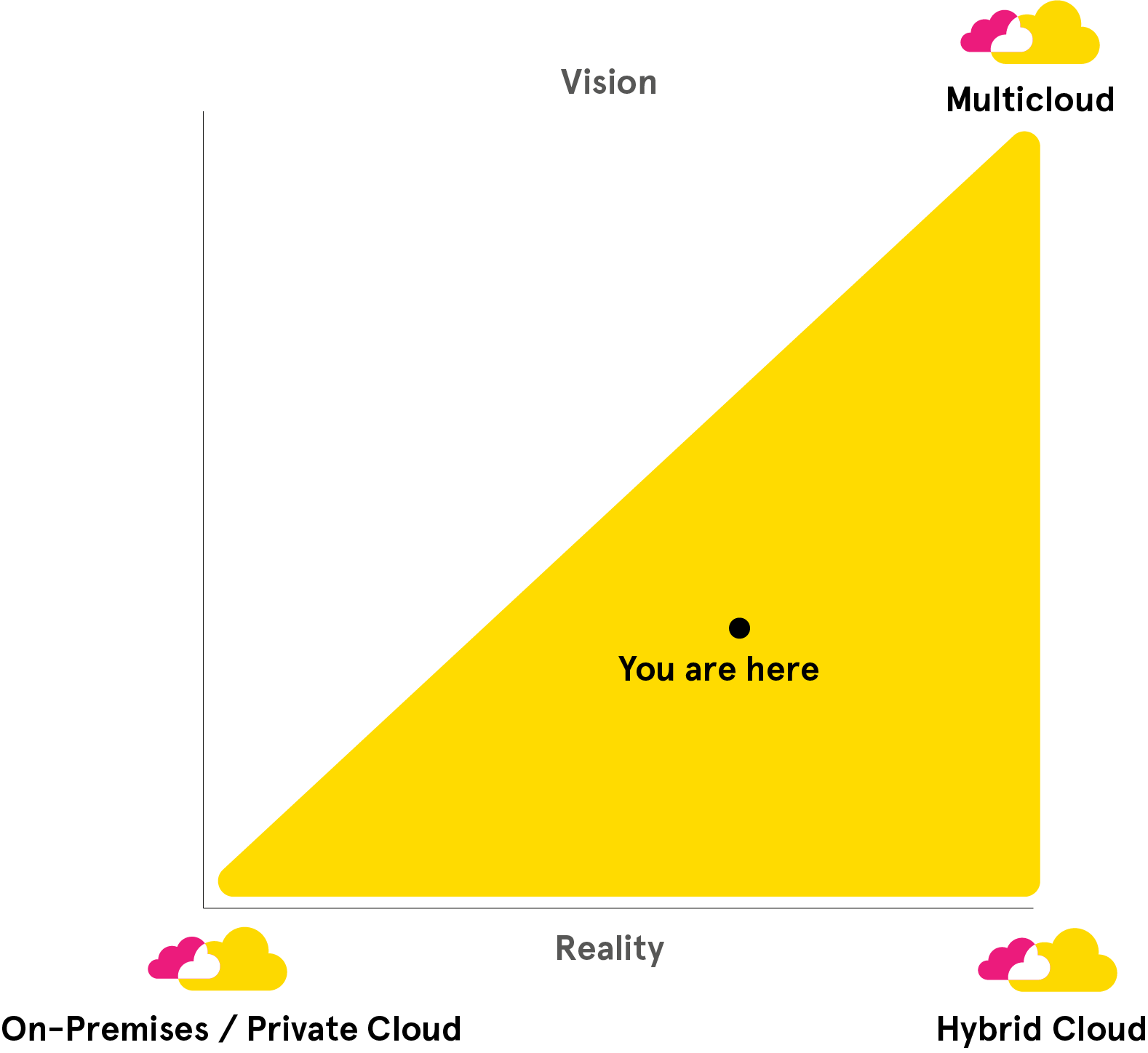Multicloud: It’s Not the “What” but the “Why”
Why is a multicloud architecture worth considering and how do we get there?
Sep 3rd, 2021
What is Multicloud?
Too much time is spent debating the true meaning of multicloud. In my mind, the true definition shouldn’t matter. What matters is that we’re moving toward an architecture that’s more resilient than technology has allowed in the past, while also dealing with more complexity and higher expectations from our customers in the future.
I like to think of multicloud as a spectrum.

Many companies are somewhere in the middle of this spectrum. IT departments, in both Data Center and Campus, have been using a mix of on-prem/private cloud, public cloud, and SaaS for several years. Often these platforms are managed by different teams, using different IPAM, DNS, and DHCP services with no visibility into other siloes. Moving towards simplified operations and management will help break down these siloes and offer a contextualized view of the network as well as the ability to create consistent workflows no matter where endpoints reside.
True multicloud, at this point, is really vision. There’s currently no technology that can give us centralized management and visibility of an entire multicloud system. However, IT departments can move towards multicloud by solving their most prioritized pain points first.
What are we trying to solve with Multicloud?
This is by no means an exhaustive list, but likely resonates with some of your current pain points.
Disaster Recovery
Disaster Recovery is often “the gateway” to the public cloud. Maintaining an entire physical DR location/colo is resource intensive, especially if it’s far away from where your IT team lives (which is often the case). If architects design for DR in the cloud, there’s no need to maintain another server and network infrastructure, or cooling and power. The first phase would be to move to a hybrid model with the DR location in the cloud, but migration and management aren’t easy. Moving towards using overlay software solutions will make migration and visibility possible as you move to the next phases in your multicloud designs and architecture.
Performance
People have high expectations for performance these days. When someone can unlock their phone with their face, transfer money between accounts, buy plane tickets, and order dinner from the same place in about 45 seconds, they’re used to a certain amount of responsiveness from their apps. Depending on the services you’re offering to your customers and employees, you may find that multiple cloud vendors and private cloud locations are necessary. Some services will run better on Azure as opposed to AWS, maybe having the data or the app running closer to the end points helps performance in some cases. The moral of the story is, to use multicloud to solve for performance issues, you also need visibility from a centralized UI to understand what’s going on in all parts of the network.
Vendor Management and Lock-In
There are likely a couple of reasons why you picked a certain vendor for your networking and/or cloud needs: technical capabilities, cost, or maybe both. You picked the best solution for what was possible at the time. However, things change. Other vendors catch up with features or price increases and decreases happen. When it comes time to make a move, a multicloud design, again using overlay solutions and automation, will make it easier to migrate to another vendor. This is the idea of sustainable networking. Use the best underlying services for the job, but try to avoid downtime and disruption by using an overlay solution to manage them.
Compliance
If you’re part of a large international company, you’re well aware that certain countries require you to store data within that country. Rather than building new physical data centers and campuses in every country, the public cloud can be a great alternative to make sure you’re compliant with your customers’ needs. No matter how you handle this, though, with another physical data center or public cloud, managing and viewing the entire system from a centralized place will contextualize information, and provide the reports and analytics you need to prove your compliance.
In the End it’s About Simplifying Operations
If there were one thing I’d like you to take away from this article, it’s that no matter where you land on your journey to multicloud, abstraction is key to simplifying your operations. Abstraction software, or overlay solutions if you prefer, will give you visibility to disparate solutions in your system. Without visibility to the entire system, we lack context, and without context data doesn’t provide us with information. With this visibility, we’re more easily able to improve, troubleshoot, and report on our networks.
Overlay solutions should also provide us with APIs that we can use to orchestrate workflows. Because we’re using the overlay to talk to the underlying services, as long as there’s compatibility, we can change or adapt those underlying services as requirements change. We can also continue to use our orchestration workflows to maintain a healthy and consistent network. Consistent networks lead to resilient networks, even when change is happening more often.
Men&Mice offers an overlay solution as described above to manage all of your DDI underlay services. To find out more go to https://menandmice.com/solutions/cloud